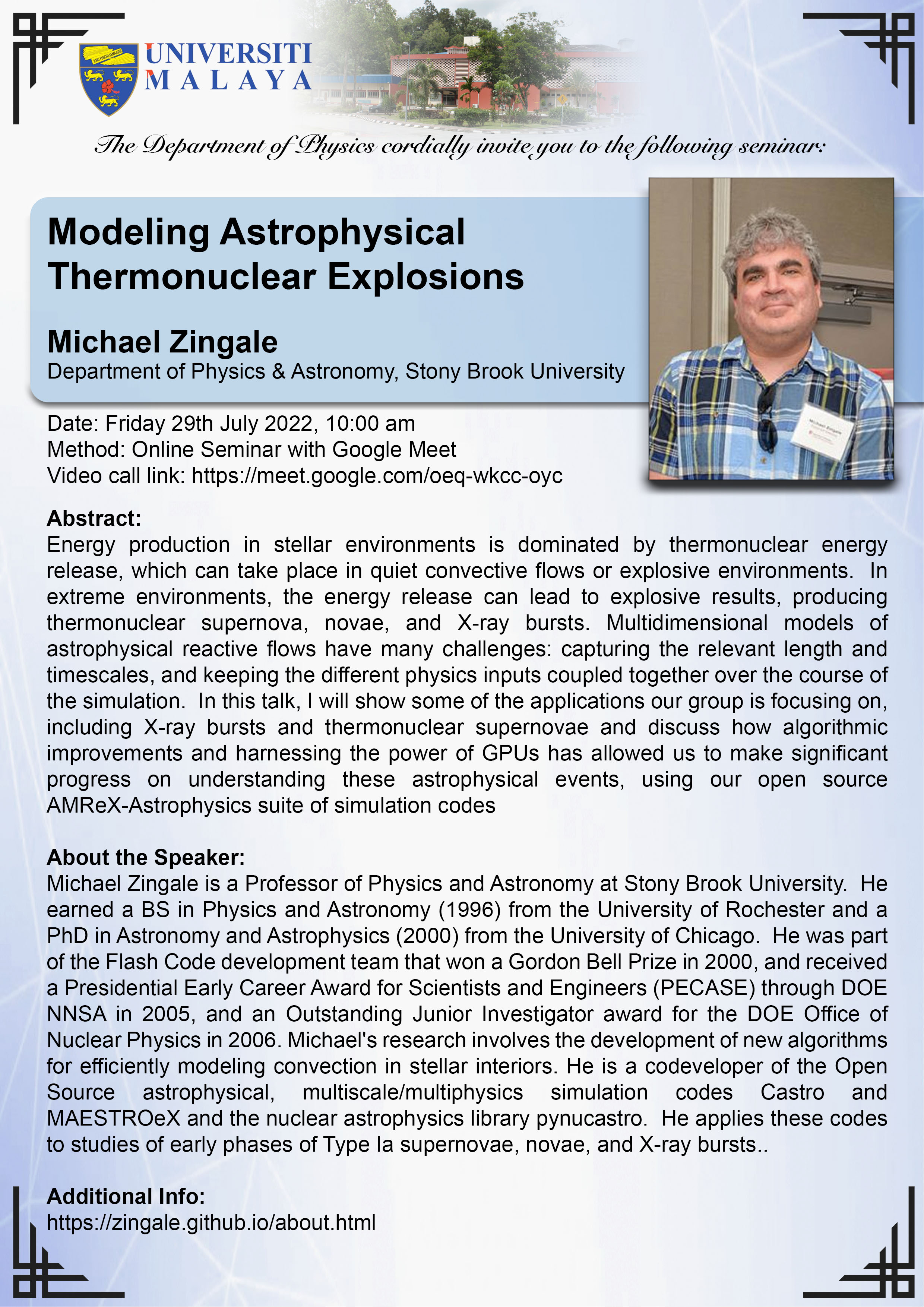Department of Physics Seminar

Title: Modelling Astrophysical Thermonuclear Explosions
Speaker: Michael Zingale, Department of Physics and Astronomy, Stony Brook University
When: Friday 29th July 2022, 10:00am
Where: Online, through Google meet link https://meet.google.com/
Abstract:
Energy production in stellar environments is dominated by thermonuclear energy release, which can take place in quiet convective flows or explosive environments. In extreme environments, the energy release can lead to explosive results, producing thermonuclear supernova, novae, and X-ray bursts. Multidimensional models of astrophysical reactive flows have many challenges: capturing the relevant length and timescales, and keeping the different physics inputs coupled together over the course of the simulation. In this talk, I will show some of the applications our group is focusing on, including X-ray bursts and thermonuclear supernovae and discuss how algorithmic improvements and harnessing the power of GPUs has allowed us to make significant progress on understanding these astrophysical events, using our open source AMReX-Astrophysics suite of simulation codes
About the Speaker:
Michael Zingale is a Professor of Physics and Astronomy at Stony Brook University. He earned a BS in Physics and Astronomy (1996) from the University of Rochester and a PhD in Astronomy and Astrophysics (2000) from the University of Chicago. He was part of the Flash Code development team that won a Gordon Bell Prize in 2000, and received a Presidential Early Career Award for Scientists and Engineers (PECASE) through DOE NNSA in 2005, and an Outstanding Junior Investigator award for the DOE Office of Nuclear Physics in 2006. Michael's research involves the development of new algorithms for efficiently modeling convection in stellar interiors. He is a codeveloper of the Open Source astrophysical, multiscale/multiphysics simulation codes Castro and MAESTROeX and the nuclear astrophysics library pynucastro. He applies these codes to studies of early phases of Type Ia supernovae, novae, and X-ray bursts..
Thank you.
